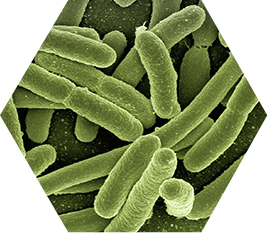
ERINHA focuses on highly pathogenic emerging and re-emerging agents which require high containment – Biosafety level 4 and complementary facilities.
The World Health Organization (WHO) classifies infectious agents according to ‘Risk Groups’ (RG). These classifications from RG1 to RG4 help to determine the safety procedures for handling the agents.
In general:
Risk Group 1 (no or low individual and community risk) – A microorganism that is unlikely to cause human disease or animal disease.
Risk Group 2 (moderate individual risk, low community risk) – A pathogen that can cause human or animal disease but is unlikely to be a serious hazard to laboratory workers, the community, livestock or the environment. Laboratory exposures may cause serious infection, but effective treatment and preventative measures are available and the risk of spread of infection is limited.
Risk Group 3 (high individual risk, low community risk) – A pathogen that usually causes serious human or animal disease but does not ordinarily spread from one infected individual to another. Effective treatment and preventive measures are available.
Risk Group 4 (high individual and community risk) – A pathogen that usually causes serious human or animal disease and that can be readily transmitted from one individual to another, directly or indirectly. Effective treatment and preventive measures are not usually available.
The term high consequence pathogens often refers to RG4 and RG3 pathogens.
More information can be found here : https://www.who.int/csr/resources/publications/biosafety/Biosafety7.pdf
ERINHA has developed in 2017 its scientific strategy – a Research Portfolio, which is an evolving strategy built on the WHO Research and Development Blueprint with systematic updates to match with European and Global Research and Innovation and Public Health needs.
The table below presents ERINHA’s prioritized pathogens, built on the WHO R&D Blueprint:
REFERENCES